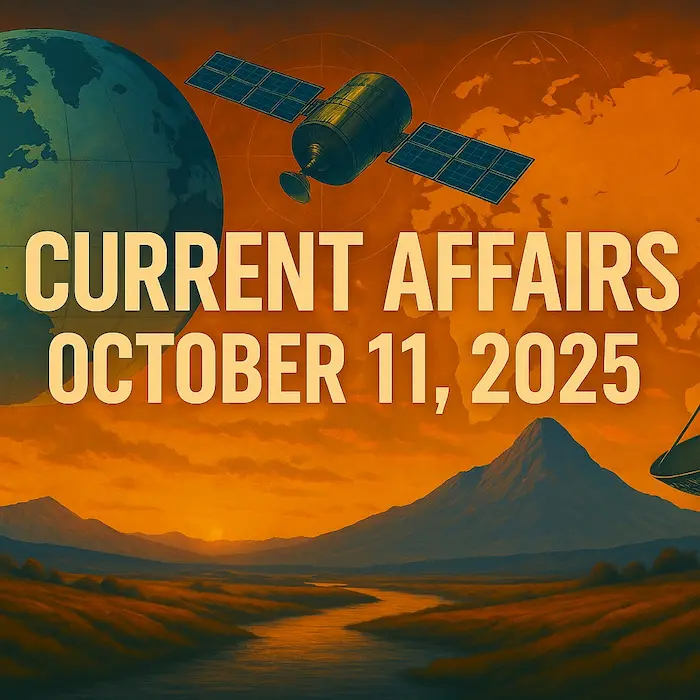1. Surrogacy (Regulation) Act, 2021 – Supreme Court Clarification on Age Criteria – Polity
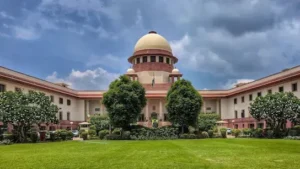
Why in News?
The Supreme Court of India recently clarified that age limits set under the Surrogacy (Regulation) Act, 2021, do not apply to couples who had frozen their embryos and initiated the surrogacy process before the law came into force on January 25, 2022.
Objective of the Act
To regulate surrogacy practices in India.
To prohibit commercial surrogacy and allow only altruistic surrogacy.
To protect surrogate mothers from exploitation and safeguard the rights of children born via surrogacy.
Key Provisions of the Act
Prohibition of Commercial Surrogacy
Commercial surrogacy (offering compensation beyond medical and insurance costs) is banned.
Aim: Prevent exploitation and commodification of women’s bodies.
Altruistic Surrogacy Permitted
Involves no monetary compensation to the surrogate mother other than:
Medical expenses
Insurance coverage
Must be driven by compassion and willingness to help.
Eligibility Criteria for Surrogate Mothers
Married woman, aged 25–35 years
Must have at least one biological child of her own
Can be a surrogate only once in her lifetime
Cannot use her own gametes
Must undergo medical and psychological evaluation
Eligibility Criteria for Intended Couples
Must be Indian citizens, married for at least 5 years
Age limit:
Female: 23 to 50 years
Male: 26 to 55 years
Must be medically certified as infertile
Must not have any surviving biological/adopted children
Exception: If existing child is mentally or physically challenged
Legal Status of Surrogate Child
The child is deemed the biological child of the intended couple
Entitled to all legal rights as a natural-born child
Regulation of Clinics
Surrogacy clinics must be registered under the Act
National and State Surrogacy Boards to monitor implementation and compliance
Recent Supreme Court Clarification
Age restrictions under the Act cannot be applied retroactively
Offers relief to couples who began the process and froze embryos before the law came into effect
Ensures that legal changes do not violate reproductive rights
Significance of the Law
Promotes ethical surrogacy in line with international standards
Recognizes the need to protect surrogate mothers, who are often from vulnerable backgrounds
Reinforces child rights and offers legal clarity for intended parents
Exam Connect – Possible Questions
Prelims
1. Under the Surrogacy (Regulation) Act, 2021, which of the following is NOT true about a surrogate mother?
A. She must be a married woman aged 25 to 35 years
B. She can use her own gametes for the surrogacy
C. She must have at least one biological child of her own
D.She can act as a surrogate only once in her lifetime
Answer: B. She can use her own gametes for the surrogacy
(The Act prohibits surrogate mothers from using their own gametes.)
2. Which of the following correctly differentiates between commercial and altruistic surrogacy under Indian law?
A. Commercial surrogacy allows foreign intended parents, while altruistic does not
B. Altruistic surrogacy involves financial incentives for surrogate mothers
C. Commercial surrogacy is legally permitted only in special economic zones
D. Altruistic surrogacy is permitted, while commercial surrogacy is banned under the Act
Answer: D. Altruistic surrogacy is permitted, while commercial surrogacy is banned under the Act
Mains
1.“The Surrogacy (Regulation) Act, 2021 strikes a balance between ethical concerns and reproductive autonomy.”
Critically examine the key features and implications of the Act in the context of reproductive rights in India.
2.Discuss the significance of judicial interpretations in maintaining a balance between legislative intent and individual rights, with reference to the recent Supreme Court ruling on age restrictions under the Surrogacy (Regulation) Act, 2021.
2. Special Intensive Revision (SIR) of Electoral Rolls by Election Commission of India – Polity
Why in News?
The Election Commission of India (ECI) has launched a Special Intensive Revision (SIR) of electoral rolls, starting with Bihar, to clean, verify, and update voter information in preparation for the 2029 General Elections.
Objective of SIR
Ensure accuracy and integrity of electoral rolls
Eliminate duplicates, outdated entries, and bogus voters
Encourage citizen participation in maintaining transparent democratic processes
Legal and Institutional Basis
Representation of the People Act, 1950
Empowers the ECI to prepare and revise electoral rolls for each constituency.
Ensures each eligible citizen has the right to vote and is properly listed.
Registration of Electors Rules, 1960
Prescribes forms and procedures for voter registration and deletion:
Form 6 – Application for inclusion of name (new voters)
Form 7 – Objection to inclusion / request for deletion
Form 8 – Correction of entries
Form 6A – Inclusion of overseas electors
What is Special Intensive Revision (SIR)?
Key Features
More comprehensive than routine annual roll revisions.
Involves:
House-to-house verification
Enumeration forms collection
Document verification
Publication of draft rolls
Filing of claims and objections by voters
Citizens’ Role
Must verify and update personal information
Use proper forms with supporting ID/address proof
Active participation ensures accurate and inclusive voter rolls
Significance of Accurate Electoral Rolls
Prevents:
Impersonation
Duplicate voting
Disenfranchisement
Strengthens free and fair elections
Boosts trust in democratic institutions
Future Directions & Modernization
Digital verification tools (Aadhaar linking, GIS mapping)
Phased roll revision to avoid last-minute errors
Awareness campaigns in schools, colleges, and rural areas
Integration with e-governance platforms to auto-update address and identity changes
Exam Connect – Possible Questions
Prelims
1. The Special Intensive Revision (SIR) of electoral rolls is conducted under the authority of which of the following laws?
A. Representation of the People Act, 1951
B. Indian Constitution – Article 324
C. Representation of the People Act, 1950
D. Election Laws (Amendment) Act, 2021
Answer: C. Representation of the People Act, 1950
2. Which of the following forms is used for the deletion of names from the electoral roll?
A. Form 6
B. Form 6A
C. Form 7
D. Form 8
Answer: C. Form 7
Mains
1.“Clean and inclusive electoral rolls are fundamental to free and fair elections.”Discuss the significance of the Special Intensive Revision (SIR) in strengthening India’s democratic process.
2.Evaluate the role of citizen participation and digital technologies in ensuring accurate electoral rolls. Suggest measures to improve the efficiency and transparency of electoral roll revision processes in India.
3. India Unveils National Red List Roadmap to Assess Extinction Risks of Species -Environment
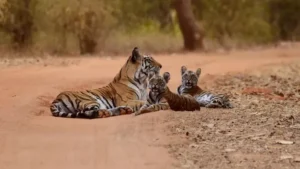
Why in News?
India launched its National Red List Roadmap & Vision 2025–2030 at the IUCN World Conservation Congress 2025 in Abu Dhabi. The initiative aims to systematically assess extinction risks of plant and animal species across the country.
Objective
Assess 11,000 species of flora and fauna by 2030.
Align with the IUCN Red List methodology, enabling better integration with global conservation efforts.
Serve as the foundation for science-based policy-making, ecosystem management, and conservation planning.
Key Highlights
1. India’s Red List Roadmap
A nationally coordinated strategy to identify and document threatened species.
Focus on publishing:
National Red Data Books for flora and fauna by 2030.
Funded with ₹95 crore for:
Capacity building
Training taxonomists
Collaborative conservation research
2. Global Context – IUCN Red List
IUCN (International Union for Conservation of Nature) maintains the global Red List of Threatened Species.
As of 2025:
169,420 species assessed globally.
Around 28% classified as threatened.
Alarming Global Biodiversity Trends
From the Living Planet Report 2024:
73% decline in global vertebrate populations (1970–2020).
Freshwater species saw an 85% decline.
Extinction rates are now 1,000–10,000 times the natural background rate, driven by:
Habitat loss
Pollution
Climate change
Overexploitation
Significance of India’s Initiative
Strengthens National Biodiversity Strategy
Enhances data availability for:
Biodiversity protection
Ecological restoration
Climate resilience
Informed Policy-making
Provides scientific basis for:
Protected Area expansion
Species recovery programs
Sustainable development planning
Global Leadership
Positions India as a responsible player in international biodiversity governance.
Supports the goals of:
Convention on Biological Diversity (CBD)
Post-2020 Global Biodiversity Framework
Expected Outcomes
National Red Data Books as official conservation guides.
Greater inter-agency collaboration among MoEFCC, Forest Departments, and research institutions.
Increased public awareness and support for biodiversity conservation.
Exam Connect – Possible Questions
Prelims
1. The recently launched “National Red List Roadmap” in India is primarily intended to:
A. Document air pollution levels in major cities
B. Identify critically endangered languages
C. Assess extinction risks of plant and animal species
D. Regulate carbon trading among industries
Answer: C. Assess extinction risks of plant and animal species
2. Which of the following is true about the IUCN Red List?
A. It is maintained by the United Nations Environment Programme (UNEP)
B. It classifies only plant species based on their conservation status
C. It is a global system to assess species extinction risks
D. It has no legal standing in biodiversity policymaking
Answer: C. It is a global system to assess species extinction risks
Mains
1.“India’s National Red List Roadmap is a step towards science-based biodiversity governance.” Discuss the objectives and significance of this initiative in the context of India’s environmental conservation goals.
2.Examine the role of species-level extinction risk assessments in strengthening environmental policy. How can such data help balance ecological sustainability with economic development?
4. International Solar Alliance (ISA): Global Solar Cooperation Led by India – International Relations
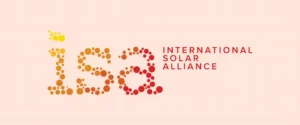
Why in News?
The International Solar Alliance (ISA), an India-led global initiative, is set to convene its annual assembly this month to review its progress and address key challenges in promoting affordable, clean solar energy worldwide.
Background
Launched by India and France during the COP21 Climate Summit in Paris (2015)
Established as a treaty-based intergovernmental organization
Aimed at promoting sustainable solar energy solutions, particularly in developing countries
Headquarters
Located at the National Institute of Solar Energy (NISE) in Gurugram, Haryana
Notably, ISA is the first international organization headquartered in India
Objectives of the ISA
Scale up solar deployment globally
Aggregate demand for solar financing, technologies, and capacity building
Promote innovation and R&D
Ensure affordable, reliable, and sustainable solar energy access
Prioritize support to:
Least Developed Countries (LDCs)
Small Island Developing States (SIDS)
‘Towards 1000’ Strategy – Vision 2030
A flagship strategy announced by ISA to transform the global solar landscape:
| Target | Goal |
|---|---|
| 1000 GW | Installed solar capacity globally |
| 1000 million | People provided with clean energy access |
| 1000 billion USD | Mobilized in investments for solar projects |
| 1000 million tonnes | CO₂ emissions reduced annually |
Membership & Participation
Eligibility: Open to solar-resource-rich countries (between Tropic of Cancer and Tropic of Capricorn) and UN members
Partner Country Status: Countries outside the tropical zone can participate as partners
Current Status:
Over 100 signatory countries
90+ full members (ratified)
ISA Assembly – Key Governance Body
The ISA Assembly is the highest decision-making authority
Meets annually to:
Approve budgets
Select the Director General
Set strategic directions
First Assembly: Held in October 2018 in Greater Noida, India
ISA Partnerships
Collaborates with:
Multilateral Development Banks (MDBs) – e.g., World Bank, ADB
Financial institutions
Public and private sector stakeholders
Civil society organizations
To develop and finance solar projects in member countries, particularly in Africa and small island nations.
Strategic Importance of ISA
Positions India as a global clean energy leader
Promotes South-South cooperation in the renewable sector
Supports UN Sustainable Development Goals (SDG 7) – Affordable and Clean Energy
A critical tool in meeting Paris Agreement goals and India’s Net Zero 2070 commitment
Exam Connect – Possible Questions
Prelims
1. Which of the following statements about the International Solar Alliance (ISA) is correct?
A. It is an initiative launched by India and the United Kingdom
B. It is headquartered in Geneva, Switzerland
C. It is the first international organization headquartered in India
D Only countries within the European Union can become its members
Answer: C. It is the first international organization headquartered in India
2. The “Towards 1000” strategy of the ISA does NOT aim to:
A. Mobilize USD 1000 billion in solar investments
B. Provide energy access to 1000 million people
C. Generate 1000 GW of coal-based power
D. Reduce 1000 million tonnes of CO2 emissions annually
Answer: C. Generate 1000 GW of coal-based power
Mains
1.“The International Solar Alliance reflects India’s leadership in shaping the global clean energy transition.” Discuss the objectives, achievements, and challenges faced by the ISA in promoting solar energy.
2.Examine the role of international organizations like the ISA in meeting the goals of the Paris Agreement and Sustainable Development Goals (SDGs). How does ISA enhance South-South cooperation?
5. Mental Health in India: Bridging the Gaps Through a Unified National Response – Governance

Why in News?
On the occasion of World Mental Health Day (October 10), renewed attention is being drawn to the mental health crisis in India, where 13.7% of the population suffers from some form of mental illness.
Despite progressive legislation like the Mental Healthcare Act, 2017, India faces critical gaps in treatment, funding, and implementation.
Legal and Policy Framework
Mental Healthcare Act, 2017
Ensures the right to mental healthcare for all citizens
Decriminalizes suicide (Section 115)
Mandates insurance coverage for mental illnesses
Protects the dignity, privacy, and autonomy of patients
Provides for advance directives and nominated representatives
Judicial Backing
In Sukdeb Saha vs State of Andhra Pradesh, the Supreme Court held that mental health is a part of the right to life under Article 21 of the Constitution.
Current Scenario: Mental Health Crisis in India
Key Statistics
13.7% of Indians suffer from mental disorders (National Mental Health Survey, 2015–16)
Treatment gap:
Depression and anxiety: 85%
Overall: 70% to 92%
India has:
0.75 psychiatrists per 100,000 population
0.12 psychologists per 100,000
(WHO recommends 3 psychiatrists per 100,000)
Existing Government Initiatives
| Programme | Purpose | Status |
|---|---|---|
| District Mental Health Programme (DMHP) | Community-level mental health care | Active in 767 districts, but suffers from poor implementation, drug shortages |
| Tele-MANAS | 24×7 national tele-mental health helpline | Over 20 lakh sessions delivered |
| Manodarpan | Mental wellness support for school and college students | Reaches 11 crore students |
Budgetary Constraints
India spends only 1.05% of the health budget on mental health
Global best practices (e.g., Australia, Canada) allocate 8%–10%
Economic cost of mental illness in India is projected to exceed $1 trillion by 2030
Challenges and Gaps
1. Infrastructure and Human Resource Deficit
Limited mental health facilities and rehabilitation centres
Uneven rural-urban distribution of professionals
2. Weak Implementation
DMHP suffers from:
Irregular medicine supply
Lack of trained personnel
Poor outreach
3. Stigma and Awareness
Over 50% of Indians view mental illness as a personal weakness
Low awareness leads to delayed diagnosis and under-treatment
4. Fragmented Governance
Mental health policy is scattered across ministries (Health, Education, Social Justice), leading to coordination failures
Way Forward: Building a Unified Mental Health Response
1. Integrate Mental Health into Primary Health Care
Train frontline workers, ASHA and PHC doctors in basic counseling
2. Increase Budgetary Allocation
Scale up to 5%–10% of the health budget to match global standards
3. Create a Centralized Mental Health Authority
Ensure cross-ministerial coordination, efficient fund utilization, and monitoring
4. Expand Tele-MANAS and DMHP
Ensure internet-based services reach rural and tribal populations
5. Combat Stigma Through Public Awareness
Use media campaigns, school curriculums, and community engagement
Exam Connect – Possible Questions
Prelims
1. Which of the following provisions is NOT included under the Mental Healthcare Act, 2017?
A. Right to access mental health care
B. Decriminalization of attempted suicide
C. Right to advance directive for treatment
D. Provision for compulsory mental health check-ups in schools
Answer: D. Provision for compulsory mental health check-ups in schools
(The Act does not mandate school-based check-ups.)
2. Which of the following government initiatives is aimed at tele-mental health services?
A. Tele-Health Bharat
B. E-Sanjeevani
C. Tele-MANAS
D. Manodarpan
Answer: C. Tele-MANAS
Mains
1.“India’s mental health system suffers from fragmented governance and inadequate implementation.”
Critically evaluate India’s mental health policy framework in light of recent government initiatives and legislative reforms.
2.Discuss the role of budgetary support, stigma removal, and primary care integration in building a comprehensive mental health ecosystem in India.
6. Punjab’s Flooded Fields: Understanding the Hidden Soil Crisis – Environment
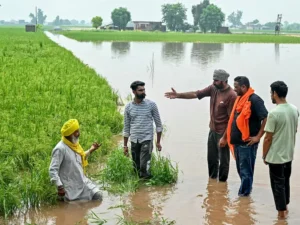
Why in News?
Punjab recently faced one of the worst flood disasters in its history, affecting all 23 districts and submerging nearly 2 lakh hectares of farmland.
With the rabi (wheat) sowing season approaching, there are serious concerns over soil fertility and agricultural recovery. However, soil experts suggest that with timely interventions, the impact can be reversed.
Core Environmental Concern
Flooding has caused soil erosion, silt deposition, and nutrient loss, triggering a hidden crisis that threatens Punjab’s agricultural productivity.
Scientific Observations (Based on Soil Testing)
1. Erosion
Topsoil, which is rich in nutrients, has been washed away in many areas.
Result: Reduced soil fertility, crop yield decline, and increased input costs.
2. Silt Deposition
Mixed impact:
Excessive silt can block root penetration and affect aeration.
But fine alluvial silt, when properly incorporated, can improve soil structure, retention capacity, and nutrient balance.
3. Soil Chemistry
Leaching of nutrients (especially nitrogen and potassium)
Temporary pH imbalance
Soil compaction in low-lying areas
Recommendations for Soil Recovery
1. Deep Ploughing
Breaks compact layers
Aids aeration and moisture movement
2. Soil Testing
To assess:
pH level
Nutrient content
Organic matter
Helps guide targeted fertilizer use
3. Balanced Fertilization
Use of micronutrients and organic compost
Avoid over-reliance on chemical fertilizers
4. Managing Silt Depth
Shallow deposits: Mix with topsoil
Heavy deposits: May require removal or delayed sowing
Impact on Rabi Season
Experts from Punjab Agricultural University (PAU) indicate that most farmers can resume normal wheat sowing if recovery steps are promptly undertaken.
Crop productivity can be stabilized with support from extension services and government subsidies.
Long-Term Environmental Implications
Need for climate-resilient agriculture, as extreme weather events like floods become more frequent.
Importance of agro-ecological zoning, crop diversification, and sustainable land management.
Exam Connect – Possible Questions
Prelims
1. Which of the following are common effects of floodwaters on agricultural soil?
1.Topsoil erosion
2.Silt deposition
3.Increase in soil salinity
4.Improvement in root depth by default
Select the correct answer:
A. 1 and 2 only
B. 2 and 3 only
C. 1, 2 and 3 only
D. All of the above
Answer: C. 1, 2 and 3 only
(Floods often erode topsoil, deposit silt, and in some regions, raise soil salinity. Root depth usually decreases due to compaction.)
2. What is the primary purpose of conducting soil testing after a flood?
A. To estimate crop insurance claims
B. To determine new irrigation patterns
C. To assess nutrient and pH balance for effective fertilization
D. To plan infrastructure redevelopment in rural areas
Answer: C. To assess nutrient and pH balance for effective fertilization
Mains
1.“Floods cause more than just physical damage—they silently degrade agricultural soils.” Examine the hidden environmental impacts of flooding on soil health and suggest post-flood recovery strategies.
2. Discuss how climate-resilient agricultural practices and soil management strategies can mitigate the impact of extreme weather events such as floods. Illustrate your answer with recent examples.

